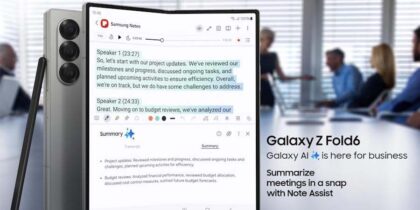Just in case enterprises still need a reason to optimize their websites for mobility, Google has announced it’s about to give them a shove. Starting in May, the search giant will be assigning a lower Google mobile ranking to any website that hasn’t implemented a mobile-friendly design. Google says the new policy is aimed at promoting an optimal user experience.
Most websites ought to be mobile-capable already, with 80 percent of all online adults now owning a smartphone, and mobile usage rising around the world. Any business that hasn’t adapted its website for mobile use is missing out on a potentially vast segment of the web-using population.
With the latest Google mobile ranking policy aimed at promoting mobile-optimized sites (or demoting sites that lag, depending on how you see it), Google is recognizing the inevitability of this rising tide. This challenges enterprises to address two basic questions: How do they develop a mobile strategy, and how do they move toward implementation?
Developing a Strategy
As with any business evolution, the push toward mobile web presence starts with a mobile strategy. Why go mobile, aside from the need to drive Google mobile rankings? What is the intent of this endeavor, both overall and in terms of business goals?
- Why? There is no sense plowing ahead without a coherent goal or mission. To build a mobility strategy, it’s necessary to first define your goals and objectives, starting at the highest level, then moving into specifics: What is the organization as a whole trying to achieve? How will a mobile-optimized website help to drive that goal?
- Who? Once you understand the purpose of mobility for your website, you must next consider who will lead the charge to achieve those aims. Will IT own the process, or will marketing take the lead? If it will be a combination of the two, identify the project champion on each side and establish clear lines of communication.
- What? The term “mobile-optimized site” is pretty broad. Consider what the mobility experience will entail for your website, and what features and functions will define it. Will your mobile web presence integrate with social media? What mobile-only deals or offers will your site display?
All these questions must come under consideration before an enterprise moves on to the next phase of development.
Implementing a Mobile-Friendly Website
Once the direction has been set, enterprises next need to tackle the manifold complexities of mobilizing a web environment. Although the details for implementation vary on a case-by-case basis, there are certain overarching steps managers can take to ensure success in their move toward mobile optimization.
- Test for mobility. Your site might have some degree of mobile-friendliness already, either because someone launched an early effort or because mobility was baked into your development tools. Therefore, it’s logical to establish a baseline, both in order to see where you stand and to avoid duplicate efforts. A number of commercial tools exist to make testing both easy and thorough.
- Build for the user. Google has long claimed that 61 percent of users will leave a mobile site if they don’t find what they want right away. Ensure content is readily visible, with a legible font and right-sized buttons and images that are large enough to be seen, but don’t bleed off the page. Presentation is of the utmost importance and should be tested on a range of devices, including phones, tablets and the latest 2-in-1 devices.
- Consider responsive design. As enterprises look to implement their mobile strategies, many will turn to responsive web design practices. A plug-in approach to mobile website design, responsive design allows developers to easily build sites that can be accessed seamlessly among multiple devices. This has become the rising standard for mobility design, and should be a core element in mobilizing an enterprise site.
Google has set the bar for mobile-friendly sites, pushing web designers to incorporate mobility in every aspect of what they do. Although there are still some businesses that have yet to implement a mobile optimized site, a two-pronged approach — strategy, then implementation — will take enterprises where they need to go in order to stay current and win those coveted Google rankings.
To stay up to date on all the latest news in enterprise mobility, subscribe in the box on the right.








